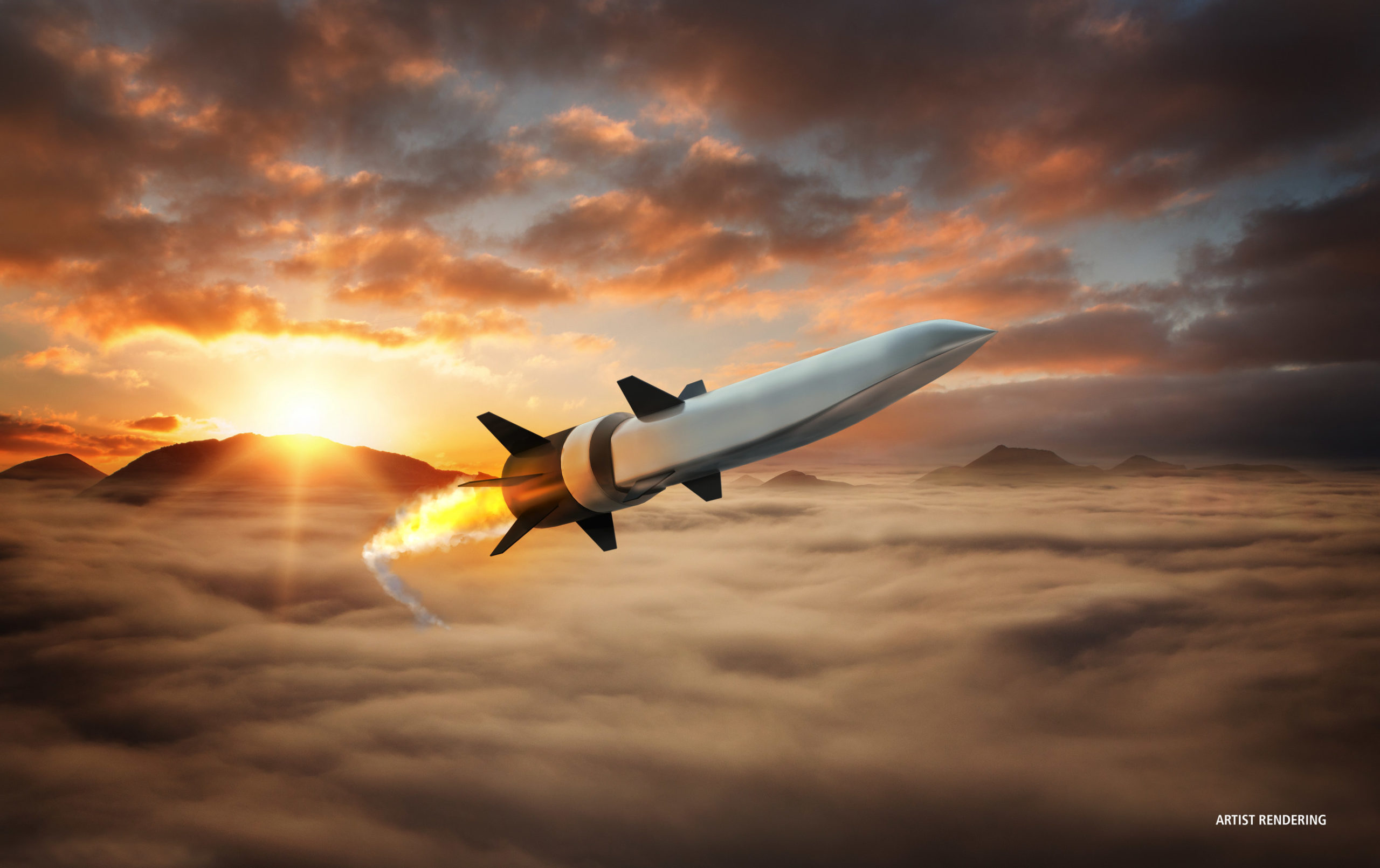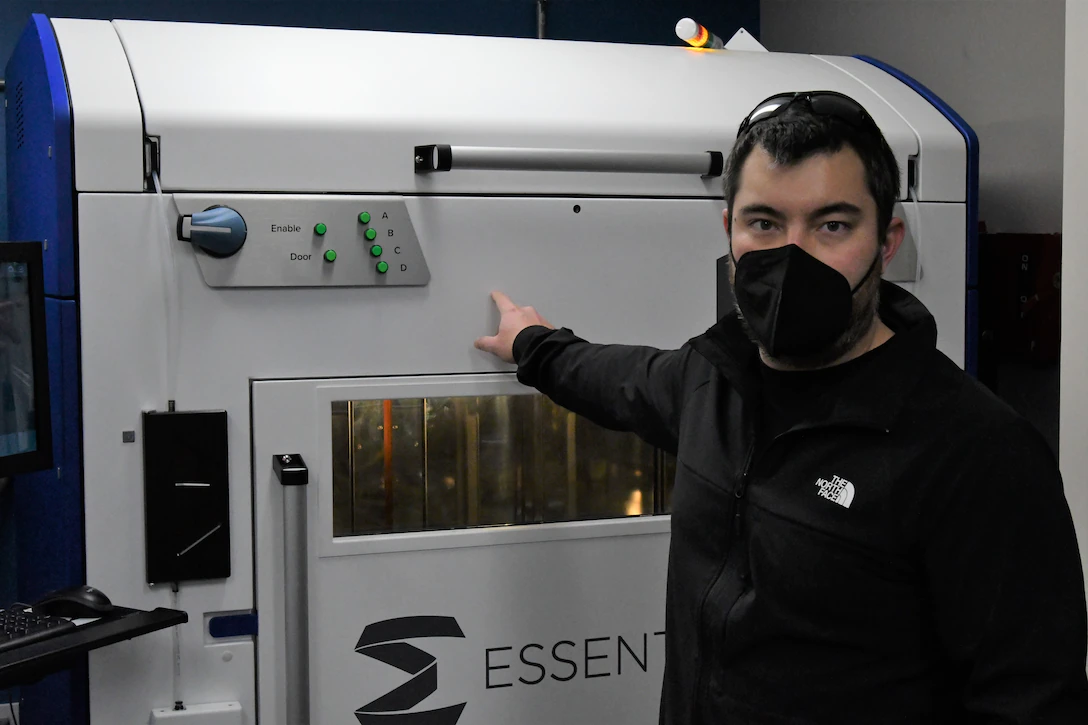A new project of the office of the secretary of defense (OSD) is looking to support the additive manufacturing required to build the Pentagon’s hypersonic capabilities. To that end, the OSD Manufacturing Technology, or ManTech program, is requesting prototype solutions for its Growing Additive Manufacturing Maturity for Airbreathing Hypersonics (GAMMA-H) challenge to expand current manufacturing processes for intricate hypersonic weapons parts.
The Department of Defense (DoD) revealed that, currently, traditional manufacturing processes could not meet the intricate geometric specifications that advanced hypersonics require.
“We need to be pushing the envelope with materials produced using the additive manufacturing process,” stated Keith DeVries, deputy director of the OSD ManTech program. “The science has proven it’s possible, but the practice is not widespread enough. GAMMA-H will encourage further adoptions of this groundbreaking technology.”
DeVries described the GAMMA-H project as an excellent opportunity for innovative teams to contribute to affordable capacity in hypersonic cruise missile production, which remains a top priority for the country’s Defense Department.
A few months ago, the Pentagon announced it had successfully tested an airbreathing hypersonic weapon that can fly at more than five times the speed of sound (Mach numbers above 5). The Raytheon-manufactured weapon, which uses air captured from the atmosphere to achieve sustained propulsion to incredible speeds, is part of the Defense Advanced Research Projects Agency (DARPA) ‘s development program for the Hypersonic Air-breathing Weapon Concept (HAWC). Adding to the hypersonics competition, the Raytheon prototype is running against Lockheed Martin’s weapon for a Pentagon contract to fully develop the HAWC, which promises next-generation capability for the U.S. military.

Artist’s concept of Hypersonic Air-breathing Weapons Concept (HAWC) missile. Image courtesy of Raytheon.
According to a U.S. congressional research report published in October 2022, funding for hypersonic weapons has been relatively restrained in the past. However, both the Pentagon and Congress have shown a growing interest in pursuing the development and near-term deployment of hypersonic systems. This is partly due to the advances in the hypersonic weapons programs of Russia and China that are designed for use with nuclear warheads and which Russia claims to have employed in its ongoing invasion of Ukraine and China, potentially unveiled during a 2019 military parade.
In contrast, most U.S. hypersonic weapons will not be nuclearly-armed, which means they will require greater accuracy and will be more technically challenging to develop than Chinese and Russian systems, presenting an excellent opportunity for 3D printing technology.
With hypersonic weapons, the technology is scarcely out of the prototype stage. GAMMA-H will contribute towards advancing AM processes that meet modern hypersonic airbreathing systems’ propulsion and temperature requirements. The objective of GAMMA-H is not only to decrease the number of individual parts that need inspection, shipment, and construction through additive manufacturing but also to give small businesses and non-traditional defense contractors opportunities to engage in defense manufacturing.
Weighing in on the potential for the U.S.-made technology, DeVries said GAMMA-H solutions would significantly improve how additive manufacturing is leveraged for airbreathing hypersonics and can only be achieved through the partnership of large companies, small businesses, and academia.
“We are very interested in expanding our roster of partners – of all sizes – that are contributing to the hypersonic mission,” observed DeVries.

Tim Peng, lead mechanical engineer at Naval Surface Warfare Center Dahlgren Division, shows off an Essentium HSE 280i HT 3D printer. Image courtesy of U.S. Navy.
A GAMMA-H Request For Solutions (RFS) was released in October 2022 on the DoD’s National Security Technology Accelerator platform as part of National Manufacturing Month, an effort helmed by the Fabricators and Manufacturers’ Association (FMA) and the National Association of Manufacturers (NAM) to promote manufacturing practices and processes, as well as to highlight efforts across the nation to train the workforce needed to support domestic manufacturing. However, the actual GAMMA-H prototype opportunity is scheduled to be released through an Other Transaction Agreement (OTA) vehicle from the Strategic & Spectrum Missions Advanced Resilient Trusted Systems (S2MARTS) with joint support from the OSD ManTech office.
Subscribe to Our Email Newsletter
Stay up-to-date on all the latest news from the 3D printing industry and receive information and offers from third party vendors.
Print Services
Upload your 3D Models and get them printed quickly and efficiently.
You May Also Like
The Dental Additive Manufacturing Market Could Nearly Double by 2033, According to AM Research
According to an AM Research report from 2024, the medical device industry, specifically in dentistry, prosthetics, and audiology, is expected to see significant growth as these segments continue to benefit from...
Heating Up: 3D Systems’ Scott Green Discusses 3D Printing’s Potential in the Data Center Industry
The relentless rise of NVIDIA, the steadily increasing pledges of major private and public investments in national infrastructure projects around the world, and the general cultural obsession with AI have...
AM Research Webinar Explores Continuum’s Sustainable Metal Additive Manufacturing Powders
Metal additive manufacturing (AM) powder supplier Continuum Powders is working to develop solutions that empower industries to reduce waste and optimize their resources. An independent life cycle assessment (LCA) of...
3D Printed Footwear Startup Koobz Lands $7.2M in Seed Round
California-based Koobz is focused on reshoring the U.S. footwear supply chain with advanced manufacturing processes, including 3D printing. The startup just announced that it has added $6 million to its...
































